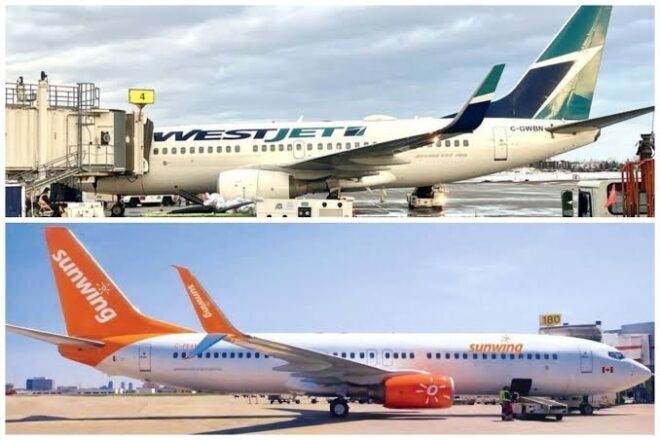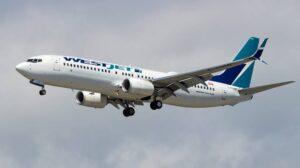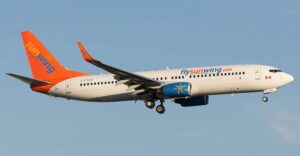
WestJet Airlines, one of Canada’s largest carriers, recently finalized its merger with Sunwing Airlines, a well-known vacation travel provider. This merger marks a significant milestone in the Canadian aviation industry, promising to reshape air travel in the country. With operations officially starting in January 2025, this newly combined entity aims to leverage the strengths of both airlines to offer a more comprehensive range of services, enhanced travel experiences, and increased competitive advantage. Here’s an in-depth look at the merger, its implications, and what travelers can expect as WestJet and Sunwing join forces.

The merger between WestJet and Sunwing Airlines has been in the works for some time, with discussions starting well before the official announcement. In March 2023, WestJet first disclosed its plans to acquire Sunwing, setting the stage for a significant consolidation in Canada’s airline industry. Regulatory hurdles, due diligence, and approval processes extended the timeline, but the deal was eventually given the green light by government authorities.
This merger aligns with WestJet’s strategy to expand its reach in the leisure travel market, which has experienced growing demand as the world recovers from the effects of the COVID-19 pandemic. By acquiring Sunwing, WestJet gains access to Sunwing’s extensive network of vacation destinations, tour operations, and charter services, thus diversifying its portfolio and boosting its presence in the market.
Strategic Rationale Behind the Merger
The combination of WestJet and Sunwing Airlines is largely driven by the complementary nature of their operations. WestJet, traditionally known for its domestic and transatlantic routes, has been expanding its reach to leisure destinations over the past decade. However, its vacation travel services remained somewhat limited compared to its larger competitors. Sunwing, on the other hand, specializes in travel to sunny, warm destinations, with a strong focus on the Caribbean, Mexico, and Central America. By merging, the two airlines can create a more integrated network that serves a broader array of customers, from business travelers to vacationers.
Additionally, the merger allows WestJet to tap into Sunwing’s tour operator business, which is one of the largest in Canada. This expansion will enable WestJet to offer more comprehensive travel packages, including flight and hotel bookings, ground transportation, and excursions, providing a one-stop shop for customers seeking vacation experiences. The integration of Sunwing’s expertise in vacation planning with WestJet’s established airline operations is expected to create new revenue streams and enhance customer satisfaction.

From a strategic perspective, merging with Sunwing also helps WestJet to consolidate its market position amid increasing competition from Air Canada and low-cost carriers such as Flair Airlines and Lynx Air. It allows WestJet to diversify its offerings and strengthens its competitive edge in leisure travel—a segment that has seen rapid growth post-pandemic.
What This Merger Means for Travelers
For travelers, the merger presents several potential benefits. The most immediate change will be an expanded range of destinations available through the combined airline. Customers will have access to Sunwing’s extensive list of popular vacation spots in the Caribbean, Central America, and other sunny locales, in addition to WestJet’s existing route network in North America, Europe, and beyond. This integration allows travelers to book vacations more seamlessly and with greater flexibility.
Moreover, travelers can anticipate an improved booking experience. The merger is expected to simplify flight scheduling, offer more convenient connections, and provide an integrated booking platform where customers can arrange entire vacation packages. With Sunwing’s tour operator business coming under the WestJet umbrella, passengers will have the option to customize travel packages that include not only flights but also accommodations, car rentals, and tours, making the planning process much more efficient.
The merger will likely lead to a boost in fleet size and frequency of flights, making it easier for passengers to find flights that match their schedules. For WestJet, integrating Sunwing’s aircraft will help streamline operations by adding more planes to the network, thus increasing flight availability.
Additionally, WestJet’s existing loyalty program, WestJet Rewards, may be enhanced to include benefits specific to Sunwing’s offerings. This could mean more opportunities for travelers to earn points on vacation packages, tours, and all-inclusive resort stays, making the rewards program more valuable and attractive.
Potential Challenges and Concerns
Despite the many anticipated benefits, the merger also comes with its share of challenges. One of the primary concerns is the integration of the two airlines’ operations, which involves merging not only fleets but also different company cultures, IT systems, booking platforms, and loyalty programs. This process can be complex and time-consuming, with the potential for operational disruptions during the transition period. The airlines will need to ensure a smooth integration to maintain customer satisfaction and avoid service interruptions.
Another challenge is regulatory compliance. The merger faced scrutiny from Canadian regulators, who had concerns about its impact on competition within the country’s airline industry. Given that the merger reduces the number of competitors in the leisure travel space, there are worries that it might lead to higher ticket prices or reduced service quality. To address these concerns, WestJet may need to make concessions or adopt measures to ensure fair competition.
Furthermore, there is a risk that the merger could lead to job losses, particularly in overlapping areas such as administrative roles, marketing, and customer service. Although WestJet and Sunwing have indicated their intent to preserve jobs where possible, some redundancies are likely to occur. The companies will need to manage this aspect sensitively to minimize negative impacts on their workforce.
Competitive Landscape and Industry Impact
The WestJet-Sunwing merger will undoubtedly impact the competitive landscape of the Canadian airline industry. Air Canada, the country’s largest airline, is expected to respond by strengthening its own leisure travel offerings, potentially through expanded partnerships or new service routes. Meanwhile, low-cost carriers such as Flair Airlines and Lynx Air may look to capitalize on any disruption or gaps in the market that arise from the merger’s integration process.
For the airline industry, this merger represents a broader trend toward consolidation, which has been observed globally in recent years. Airlines are increasingly merging or forming alliances to achieve economies of scale, expand route networks, and enhance their ability to weather economic uncertainties. For Canadian consumers, however, the key question will be whether this merger results in better services and more competitive prices or if it simply leads to reduced competition.
Looking Ahead: What to Expect in January 2025 and Beyond
As WestJet and Sunwing Airlines prepare to launch their joint operations in January 2025, travelers can expect a gradual rollout of integrated services. Initially, the airlines will likely focus on harmonizing flight schedules, offering codeshare agreements, and aligning their booking systems to provide a seamless customer experience. The newly combined entity may introduce new branding, promotional campaigns, and vacation package deals to attract customers.
In the long term, WestJet’s strategy will probably involve expanding its vacation travel offerings even further, possibly adding new destinations in response to consumer demand. The airline may also invest in upgrading its fleet and onboard services to cater to leisure travelers’ preferences, such as more spacious seating, improved in-flight entertainment, and exclusive travel packages.
WestJet’s acquisition of Sunwing is also likely to pave the way for innovation in the airline’s business model. With an integrated tour operator business, WestJet can better compete with other airlines that offer vacation packages, such as Air Canada Vacations. The ability to bundle flights, hotels, and experiences could attract a broader customer base and position WestJet as a comprehensive travel service provider rather than just an airline.
The completion of the WestJet and Sunwing Airlines merger marks a significant development in the Canadian airline industry, promising to reshape the travel landscape with the launch of joint operations in January 2025. By combining WestJet’s robust network with Sunwing’s expertise in vacation travel, the merger aims to deliver enhanced services, an expanded destination portfolio, and a more seamless travel experience for customers. However, the merger also presents challenges in terms of integration and regulatory concerns. As the two airlines work toward a smooth transition, the long-term success of this merger will depend on their ability to balance customer needs with competitive dynamics in the market. Ultimately, the WestJet-Sunwing merger represents a step toward the future of air travel in Canada, where travelers can look forward to new opportunities and experiences.